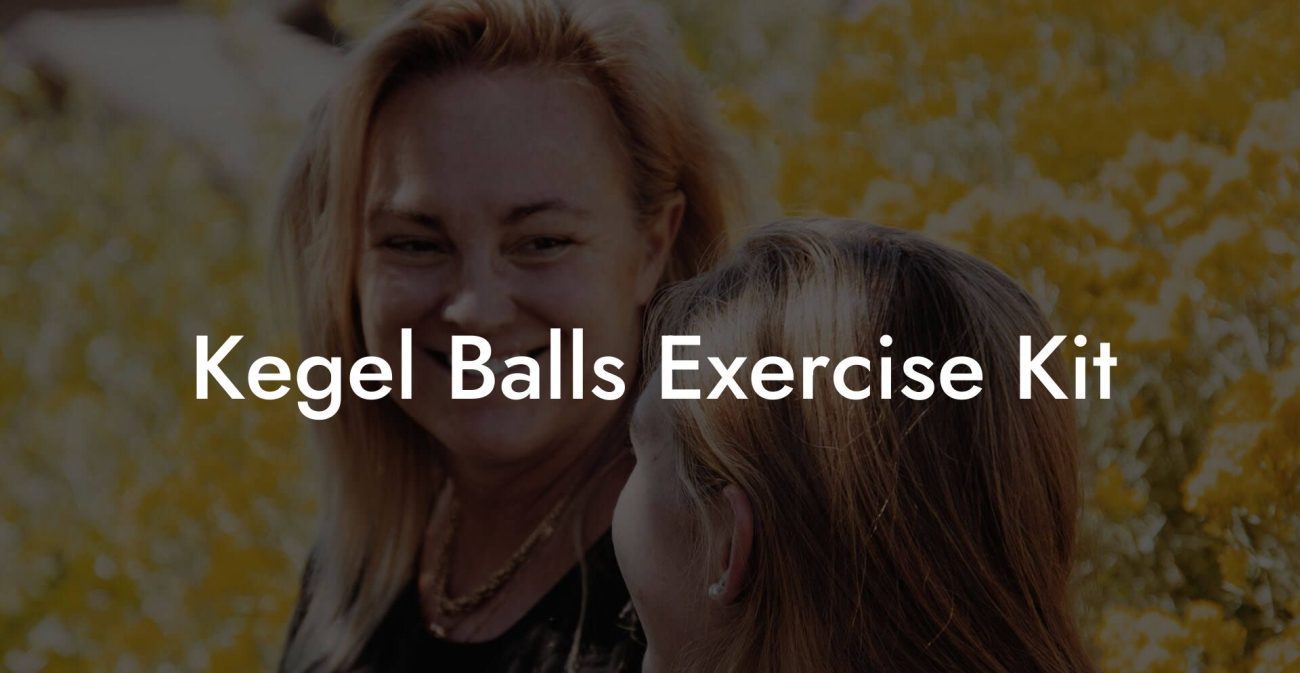Congratulations on your bundle of joy! As exciting as it is to be a new mom, giving birth can also bring challenges, especially when it comes to your pelvic floor health. After childbirth, many women experience weakened pelvic floor muscles, resulting in issues such as urinary incontinence and sexual discomfort. But fear not, as kegel exercises are here to save the day! In this article, we'll explore the benefits of kegel exercises after birth, how to perform them correctly, and tips for success on your journey to a stronger pelvic floor.
What are kegel exercises, and why are they important after birth?
kegel exercises, named after Dr. Arnold Kegel, are simple muscle contractions designed to strengthen your pelvic floor muscles. These muscles support your uterus, bladder, small intestine, and rectum. During pregnancy and childbirth, your pelvic floor muscles undergo a lot of stress and can weaken, leading to issues such as urinary incontinence (leaking urine), pelvic organ prolapse, and even sexual discomfort or pain.
Performing kegel exercises regularly can help restore muscle tone, alleviate symptoms, and prevent long-term complications related to pelvic floor weakness. It's a non-invasive, low-risk way to improve your postpartum health and overall well-being.
How to perform kegel exercises correctly
- Find the right muscles: To identify your pelvic floor muscles, try stopping urination midstream. The muscles you use to do this are your pelvic floor muscles. You can also insert a clean finger into your vagina and try to squeeze the surrounding muscles. If you feel a tightening around your finger, those are the right muscles.
- Perfect your technique: Once you're sure you've found the correct muscles, lie down on your back with your knees bent and feet flat on the floor. Tighten your pelvic floor muscles for 3-5 seconds, and then relax for the same amount of time. As your muscles get stronger, you can gradually increase the hold time to 10 seconds.
- Be consistent: Aim for at least three sets of 10 repetitions per day. As with any exercise, consistency is key to seeing progress. To make it a habit, try incorporating Kegels into your daily routine, such as during your morning shower or while watching TV at night.
- Remember to breathe: It's essential to breathe freely during kegel exercises and not hold your breath. Relax your abdomen, thighs, and buttocks, focusing only on your pelvic floor muscles.
Tips for success
- Start early: You can begin practicing kegel exercises during pregnancy, which may make it easier to continue after giving birth.
- Consult your doctor: Before starting any exercise regimen postpartum, it's essential to speak with your healthcare provider to ensure it's safe for your unique situation.
- Prioritize your pelvic floor: It's not uncommon for new moms to feel overwhelmed and busy, but making time for your pelvic floor health can significantly improve your postpartum recovery and future well-being.
- Be patient: Strengthening your pelvic floor muscles takes time and consistency. It can take several weeks or months to see improvement in symptoms, so don't get discouraged if you're not seeing immediate results.
kegel exercises For After Birth Example:
Tina, a first-time mom, struggled with urinary incontinence after giving birth to her baby girl. After speaking with her doctor, she began incorporating kegel exercises into her daily routine. She started with three sets of 5-second holds, gradually increasing to 10-second holds as her muscles grew stronger. By making Kegels a part of her morning routine while brushing her teeth, she was consistent in her practice. After six weeks, Tina noticed a significant improvement in her urinary control and confidence in her pelvic floor health.
Prioritizing your pelvic floor health postpartum can make a world of difference in your recovery and quality of life. Armed with the knowledge and technique to perform kegel exercises effectively, you're well on your way to a stronger, healthier pelvic floor. If you found this guide helpful, please feel free to share it with other new moms who can benefit from kegel exercises after birth. And don't forget to explore our other guides on Pelvic Floor Therapy to further support your postpartum journey. Be patient, stay consistent, and take control of your pelvic floor health today!













